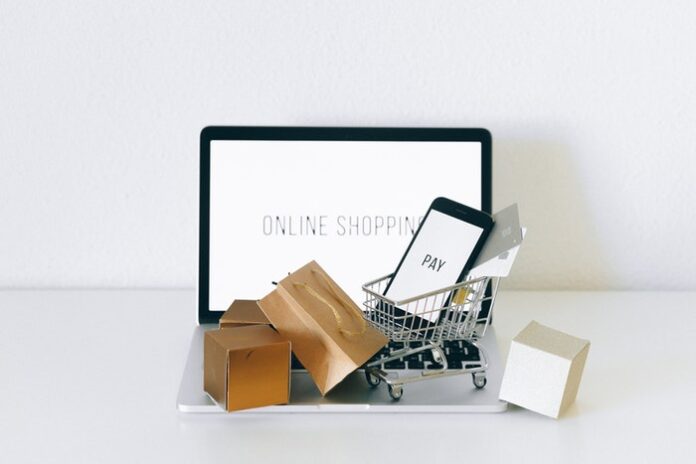Imposed isolation and lockdowns have changed the way the majority of people purchase products in 2020. Ecommerce trends are changing, with the arrival of COVID-19 forcing shoppers online in the wake of panic buying and product shortages. The United Nations reports there has been a seismic shift in the shopping habits of society that are not forecast to return to normal in the future. The COVID-19 pandemic has driven communities around the world to turn to digital technology to provide products and essential services.
1. Grocery Shopping
In the early days of the pandemic, shopping habits changed quickly in response to panic buying and stockpiling. The switch to online grocery shopping began when the first lockdowns were announced in Europe, with France and Italy among the hardest hit. The ability of shoppers to find the basic supplies needed for everyday life was a huge problem, with local stores quickly running low. Online shopping giants quickly placed limits on necessary items to keep them in stock throughout the pandemic. 2020 prompted a spike in online grocery shopping of more than 200 percent over the numbers for 2019.
2. Shopping for the Holidays
The most important shopping periods for retailers are the Holidays. In Asia, November’s Singles Day and the U.S. Black Friday event are times when retailers make the majority of their profits. The success of a retailer in November determines whether they turn a profit that year. Retailers in the grocery and medical sectors had seen profits rise early in the year, but luxury item stores had struggled to meet their sales targets throughout the year. November saw record sales for Singles Day and Black Friday as traditional brick-and-mortar retailers took their sales online.
CNBC reports the Chinese online retail giants, JD.com and Alibaba completed more than $115 billion in sales on Singles Day. In the U.S., record sales were recorded for Black Friday and Cyber Monday, with the latter breaking records at $10.8 billion in sales.
3. A Focus on Health
Retailers are looking at how the pandemic is shifting the focus of consumers to new product areas. The concern over the purchase of junk food and unhealthy products has been limited by pandemic Ecommerce trends. The change in buying habits has been highlighted by rising medical sector sales. Sales in the medical sector are being driven by the need for hand sanitizer, latex gloves, and face coverings.
The sale of medical masks and sanitizer was reported to have risen by over 300-percent in the first months of the pandemic. The issue of price gouging has become a problem for many communities, with online shopping protecting shoppers.
4. Different Products Are Wanted
Consumers are looking to prepare for a long-term future with COVID-19. Consumers are changing the way they seek out products with a long lifespan. Some of the most popular non-perishable products on the market during 2020 included dried milk products. The ability to create a store of food has driven shoppers online to interact with Ecommerce brands. Milk substitutes have a long lifespan and have seen a rise in sales of over 300 percent during 2020.
5. The Return of Delivery Services
The gig-economy had sparked a return to delivery as a fast food option. However, the pandemic changed the way shoppers go about their weekly grocery shop. Instead of spending time shopping in a crowded grocery store, consumers are looking to take advantage of BOPIS options. The acronym stands for Buy Online Pickup In-Store. The fear of spending time in a crowded grocery store has driven many shoppers to place their grocery shopping lists in the hands of store employees.
Shoppers are moving towards the delivery services offered by big box stores, such as Walmart, with a small percentage enlisting the services of personal shopping companies. A personal shopper will complete the grocery shopping for food and beverages and deliver it all directly to your door for a small fee. The most influential members of this sector have seen growth in 2020 of over 100 percent, with Instacart reaching a 200 percent growth rate.
6. Emerging Economies Are Moving Quickly
A part of the latest Ecommerce trends that has been shown in several studies is the changes for shoppers from emerging economies. The changing tide of Ecommerce trends include a move online for those from emerging economies. The shift to online-based purchases has allowed different sectors to benefit from the growing number of online shoppers. Home improvement and furniture sales have grown online during the pandemic in emerging nations, particularly in regions where COVID-19 has been widespread. In emerging economies, the majority of consumers have slashed their travel and tourism spending by around 75 percent.
The pandemic has had a significant effect on the online shopping sector and sparked the demise of the traditional Main Street store. Retail experts are expecting the shift to online shopping to remain in place for the foreseeable future, whether COVID-19’s spread is halted or not.
Find a Home-Based Business to Start-Up >>> Hundreds of Business Listings.

















































